A genetic screen reveals a key role for Reg1 in 2-deoxyglucose sensing and yeast AMPK inhibition
- PMID: 41066605
- PMCID: PMC12520357
- DOI: 10.1371/journal.pgen.1011896
A genetic screen reveals a key role for Reg1 in 2-deoxyglucose sensing and yeast AMPK inhibition
Abstract
The yeast Saccharomyces cerevisiae thrives in sugar-rich environments by rapidly consuming glucose and favoring alcoholic fermentation. This strategy is tightly regulated by the glucose repression pathway, which prevents the expression of genes required for the utilization of alternative carbon source. Central to this regulatory network is the yeast ortholog of the heterotrimeric 5'AMP-activated protein kinase (AMPK), which adjusts gene expression in response to glucose availability. The activity of the yeast AMPK complex is primarily regulated by the phosphorylation state of its catalytic subunit Snf1, a process orchestrated by a balance between upstream kinases and phosphatases. Among the latter, the Protein Phosphatase 1 (PP1) complex Reg1/Glc7 plays a critical role in inhibiting Snf1 activity under glucose-rich conditions. Despite its importance, the precise mechanism by which glucose availability leads to Snf1 inhibition remains incompletely understood. Evidence suggests that hexokinase 2 (Hxk2) participates in this pathway, potentially coupling the early steps of glucose metabolism to Snf1 signaling. Notably, the toxic glucose analog 2-deoxyglucose (2DG)- which is phosphorylated by Hxk2 but not further metabolized- mimics glucose in its ability to repress Snf1, implicating glucose or 2DG phosphorylation as a key regulatory signal. Additionally, yeast AMPK activity correlates with 2DG resistance through mechanisms that are incompletely described. In this study, we performed a large-scale 2DG-resistance genetic screen to explore both the molecular basis of 2DG resistance and AMPK regulation in yeast. The identified mutations confer resistance either by reducing 2DG phosphorylation (e.g., mutations in HXK2) or by enhancing constitutive Snf1 activity, via gain-of-function alleles in AMPK subunits or loss-of-function mutations in REG1 and GLC7. We also describe a novel series of REG1 missense mutations, including reg1-W165G, that maintain basal, glucose-regulated Snf1 activity but fail to mediate 2DG-induced Snf1 inhibition. These findings position Reg1 as a central mediator in glucose sensing, possibly by sensing 2DG-derived -and by extension, glucose-derived- metabolites.
Copyright: © 2025 Ballin et al. This is an open access article distributed under the terms of the Creative Commons Attribution License, which permits unrestricted use, distribution, and reproduction in any medium, provided the original author and source are credited.
Conflict of interest statement
The authors have declared that no competing interests exist.
Figures
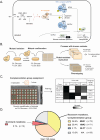
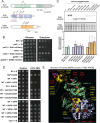

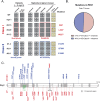


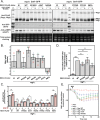

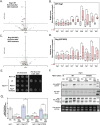
References
MeSH terms
Substances
LinkOut - more resources
Full Text Sources

